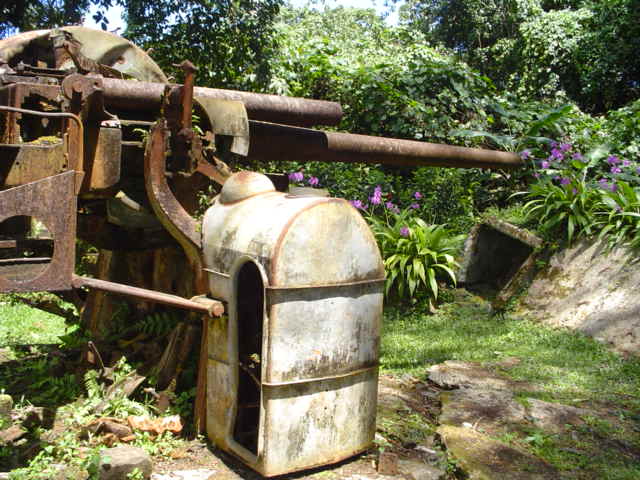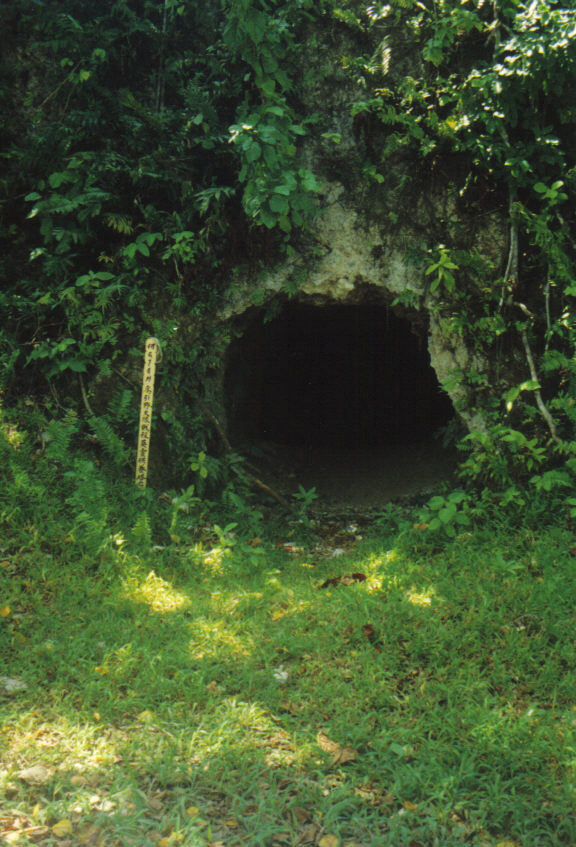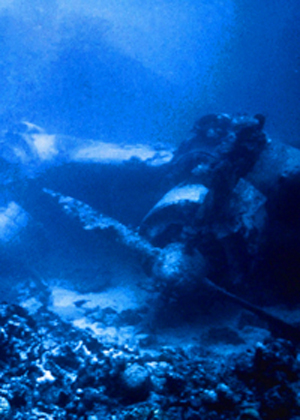Micronesia Goes to War
Prominent on the homepage of the Embassy of the Federated States of Micronesia’s website this month is a link to an October 2005 Micronesian Seminar essay entitled “The Call to Arms: Micronesians in the Military.” That essay is a thoughtful commentary by Francis Hezel, MicSem’s director, on an article that appeared in the November 2004 issue of Pacific Magazine about the increasing number of Micronesians enlisting in the US military (despite their rising death rate in Iraq) and the fact that there was almost no objection to or questioning of the US military's presence or actions in Iraq by the people of Micronesia.
Writing almost a year later, Father Hezel was able to give some sobering statistics from a USA Today article, among them the fact that the per capita death rate for Micronesian soldiers in Iraq was five times greater than the rate for American soldiers. He was also able to report that “heated discussion, perhaps even a debate” was beginning to take place among Micronesians as to whether or not they should be serving in the US military. To give some idea of the range of the debate, Father Hezel quotes from several sources: an article from the January 2005 issue of Pacific Magazine, in which John Haglelgam, a former president of the FSM, says that, although island youth cannot be prevented from taking the bait that military recruiters dangle, local governments should at least take a greater part in reminding their young citizens of the real dangers involved in military service and letting them know that they are not serving their own country when they become soldiers in the Unites States armed forces; another article reproduced on the MicSem website that originally appeared in The Kaselehlie Press, in which Willy Kostka, director of the Conservation Society of Pohnpei, decries Micronesian participation in the Iraq War as un-Christian and un-Micronesian; and several postings, both pro and con, from the MicSem discussion forum.
Despite the dangers, despite the death toll, Father Hezel reports that Micronesians are joining the military in record numbers today: as many as a hundred a year, he estimates, from the FSM, Palau, and the Marshall Islands. And while he admits that he has never felt the attraction himself, he notes that the military life has had an undeniable appeal for many Micronesians, even as far back as the 1950s. He looks for reasons to explain that appeal, drawing on newspaper articles, comments posted to the MicSem forum, and his own good sense and intelligence: some say it’s patriotism and gratitude that motivate them; others that it’s the discipline, the salary, the training; still others say it’s the chance to get off a small island and see the world. He suggests that it might be some hereditary remnant of the wanderlust that led the ancestors of today's Micronesians to set off in sailing canoes across hundreds of miles of unknown ocean in search of new shores to settle.
Father Hezel provides recent historical context for the subject; he discusses the cost of the war to Micronesia in human terms; and he writes cogently about the obvious financial, educational, and personal benefits military service offers, especially in places like Micronesia, where paying jobs are scarce. He concludes by condemning the Iraq War, lamenting that so many Micronesians are fighting and dying in a conflict that isn’t their own or one of their making; regretting that the economy of the islands is so weak that young people are practically driven into the arms of military recruiters; and asking if all of this “is the best that their country—their own country, not the one they swear to defend—can offer them?”
Is it?
I don’t know.
Which is one reason why, as much as I understand the need to foster debate in Micronesia and to have the people of Micronesia answer such questions for themselves, I wish Father Hezel had at least suggested one or two answers to the question he poses. He does such a good job at laying out points of view and arguments for and against military service for Micronesians, that one wants him to use some of the knowledge and experience he has accumulated over the years to shape a conclusion. Without that, the essay comes off, at least for me, as little more than a well organized, well written compilation of facts and opinions already put forth by others, many of them Micronesians.
On the other hand, maybe Father Hezel doesn’t answer the question because there is no answer to it.
Or maybe because the answer is “yes,” and that would be a difficult answer for anyone to give. Maybe the FSM really is doing the best it can for its young people, and maybe that best is not, cannot, will never be good enough to keep many of them from looking elsewhere for job opportunities.
Or maybe the answer is, until more young Micronesians go overseas to get better educations and then return to their countries to help contribute to those countries’ economies, the overall economy of the area will never improve enough to provide jobs for all of those who want them. Father Hezel himself notes that citizens of the FSM are already emigrating to the United States at the rate of almost 2,000 a year in the hope of finding work. And in that search for work, the lure of the military is extraordinarily strong because of "what Uncle Sam is willing to pay [his] soldiers." Maybe the military is a necessary path, a necessary gamble, that many must take in order to have at least some chance of getting a better education and a better life. If it's an evil for Micronesians, maybe it's at least an understandable one.
In fact, maybe military service isn’t a bad thing at all. Maybe it’s the best thing that could happen to Micronesians. There are other articles and essays on the MicSem site that suggest that life in the islands is not without its own dangers, not without illnesses and behavioral patterns that could lead to untimely deaths. What, for example, of the “trivial" teenage suicides about which Father Hezel has written so knowledgeably and extensively? Might not the possibility of service in the military have some effect on decreasing their numbers? What about the poor physical health of many Micronesians, about which Father Hezel has also written? Might not becoming a soldier lessen a young person’s chances of dying of or being disabled by complications brought on by poor nutrition and lack of exercise? His or her chances of succumbing to stroke, or heart disease, or diabetes?
I don’t know.
What I do know is that paternalism is an occupational hazard of many vocations (some more than others), and even the wisest, most benevolent, best-intentioned paternalism in the world cannot ultimately escape becoming condescension to those towards whom it is directed. When all is said and done, the men and women who are leaving their homes to, in Father Hezel’s words, “take jobs as dishwashers or fast-food cooks or gas station attendants” or to join the military—whether they come from a Republic or Federated State in the middle of the Pacific, or whether they come from one of the states or territories of the United States itself—are adults and deserve to be treated as such. That means they deserve to be allowed to think for themselves and, on their own, to make decisions that will affect their careers (no matter what others might think of those careers) and their lives.
And to be respected for doing so.
Whether or not they make mistakes.
Whether or not their decisions turn out to be the best ones that might have been made.
Or the worst.
For those of us who made the decision to join the Peace Corps—and I honestly think that most of us truly believed we would be working for peace—and to serve in Micronesia when another American war was raging (that one in Vietnam), there is bitter, bitter irony in the fact that today many Micronesians, the sons and daughters of children we taught, are fighting in the US army, and some of them are dying or are in danger of dying in a war that is just as incomprehensible, possibly just as pointless, as the war in Vietnam turned out to be.
It doesn’t help—in truth, it makes the irony almost unbearable—to know that Micronesians are not only allowed, they are recruited, to fight, to use deadly force, perhaps to die in the US military on behalf of American citizens, but American citizens who are Peace Corps Volunteers today are not allowed to work (at jobs, by the way, which are just about as non-lethal as any jobs on earth could be) on most of the islands of Micronesia, Micronesia's Outer Islands, because those remote, beautiful, peaceful places are now considered to be too dangerous for American lives to be risked on them.
("Morality check on Aisle 5, please.")
If I were a young Micronesian, that fact alone would give me pause.
It would make me think twice about joining the US army: “Let’s see now, it’s okay for me to enlist, go to Iraq, fight, maybe get killed; but it’s not okay for an American Peace Corps Volunteer to come to Micronesia and then go to teach children on Ifalik or Lamotrek or Satawal. Hmm.”
And it would make me very, very, very angry.
I like the way Art Hegewald, who served on Ifalik from 1968 to 1970, put it on the Microbuds Forum recently. In response to hearing that Peace Corps Washington had once again decided it would not relax its 24-hour “rescue” rule for the Outer Islands of Yap and, therefore, would not place Peace Corps Volunteers on those islands, Art had this to say: “It boggles my mind that the US government is willing to send thousands of young Americans halfway around the world in harm's way, but isn't willing to send a handful more than 24 hours away from a Peace Corps office in the pursuit of peace. What’s wrong with this picture?”
What's wrong indeed.
Frank Glass
New York, NY
June 2006

Click here to add text.
Among plants and flowers on Pohnpei, a rusting Japanese gun from World War II (Photo by Garrett Johnson)
Japanese prayer stick in front of an old Japanese bunker on Peleliu, where one of the bloodiest battles in the Pacific was waged in World War II (Photo by Diane Hall)



In the vast Chuuk Lagoon, a downed Japanese fighter plane from World War II (Photo by Barry Connell)